Tinned Fish Fans, Rejoice: Island Creek Oysters Is Opening a New Cannery
The beloved oyster company will have one of the few canneries left in America when it opens its new operation in Massachusetts.
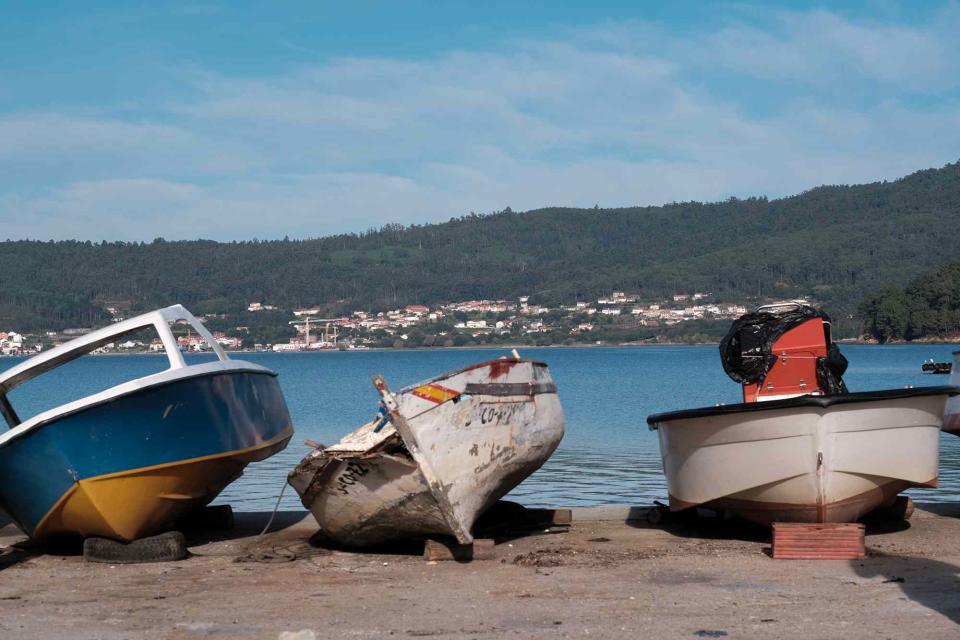
Stacey Leasca
It’s as nice a day as days get in northern Spain. I’m in Cambados, a municipality in the region of Galicia, known best for its monuments, wine, and, most importantly, outrageously good seafood. Specifically, I’m in a teeny, tiny boat just off the coast, watching as Juan, a local shell fisherman, navigates to his favorite spot. His ear-to-ear grin and pink vintage Thrasher sweatshirt project the utmost confidence. He stops, gently dips his rake into the calm and crystalline waters, and pulls up a cockle.
Excitedly, he takes the shell of one to open the other, revealing a soft, white belly glistening in its own brine. He then hands it to me and says, “Eat.” So, I oblige, slurping down the sweet flesh. It was, hands down, the best bivalve I’ve ever eaten. It’s also likely the only time I’ve ever truly known where the seafood I’m eating comes from.
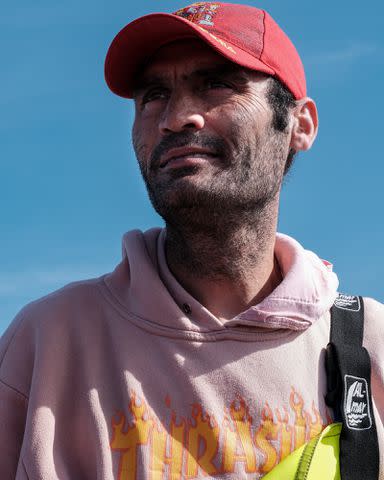
Stacey Leasca
I traveled to northern Spain alongside Island Creek Oysters, an operation out of Duxbury, Massachusetts, that bills itself as a “vertically integrated farm dedicated to making an impact on our food systems and having a damn good time along the way.” It operates one of the only shellfish hatcheries in the Northeast, has a thriving straight-to-consumer business, and a restaurant group with locations in Duxbury and Portland, Maine.
Soon, it will operate its own cannery in New Bedford, Massachusetts, producing a premium line of tinned shellfish. And when it does, it will become one of the few canneries in America. In fact, the last American cannery producing canned sardines closed in 2009.
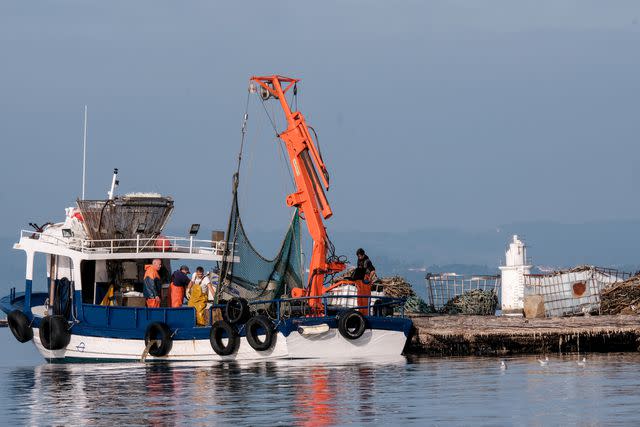
Stacey Leasca
In 2022, the company applied for and received a grant as part of the Food Security Infrastructure Grant Program from the State of Massachusetts. The grant, Island Creek explained in a statement, is aimed at addressing “urgent food insecurity for residents across the Commonwealth as a result of the COVID-19 pandemic.” But this isn’t about just feeding people. For Island Creek, it’s about so much more, including creating distribution disruption for local fishermen hoping to enter the extremely hot tin fish game, and helping us all better track where our seafood comes from.
:
Tracing your seafood’s route from hook to plate is essentially impossible. And in a lot of circumstances, consumers are forced to blindly trust that what they’re eating is what the menu says it is. In 2018, the New York State Attorney General’s office released its report, “Fishy Business: Seafood Fraud and Mislabeling in New York State Supermarkets,” showing 26.92% of seafood purchases with an identifiable barcode were mislabeled. Though the report noted that mislabelling affected almost every category, consumers who think they purchased lemon sole, red snapper, and grouper are “more likely to receive an entirely different fish.”
In 2021, The Guardian released its Seascape analysis, a survey of 44 studies looking at more than 9,000 seafood samples from restaurants, fishmongers, and supermarkets across multiple countries. It found that 36% of the products were mislabelled, “exposing seafood fraud on a vast global scale.”
:We Tried Over 20 Cans of Tinned Fish. Here Are Our Favorites
But this is where Chris Sherman, president of Island Creek, is determined to be different.
“If we wanted to have a U.S. fish or harvested, U.S. processed, craft conserva, we were gonna have to do it ourselves,” Sherman said. “A big piece of it is, we try to vertically integrate everything that we do, to whatever extent possible. So for us, owning the production and the canning gives us a guarantee that we're getting the quality and the kind of ethically sourced product that we always promise.”
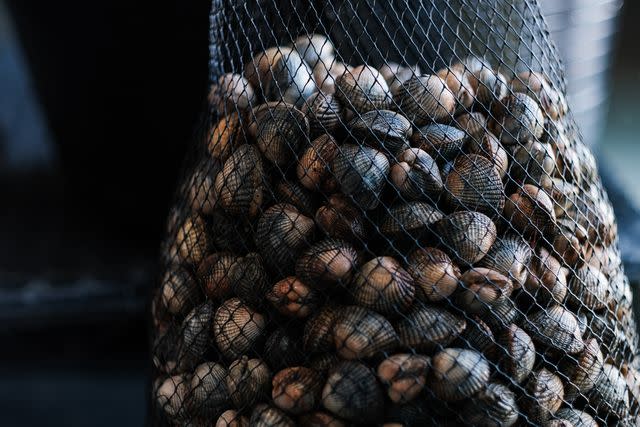
Stacey Leasca
Sherman and his colleagues Meggie O'Neal, the procurement director, and Robert Chandler, director of operations, made this mission abundantly clear on our trip to Spain. For years, the trio has worked to track the suppliers down of a few favored conservas brands, ensuring they are traceable and of single origin. And once they did, they paid them and partnered with them to launch the Conservas Mariscadora, a six-tin line of items like clams, cockles, scallops in vieira sauce, razor clams in olive oil garlic and chili, and mussels in pickled sauce.
At the time of the launch, Sherman explained, “We love these single-origin tins from Mariscadora because they allow you to stock your pantry or hit the road with super premium seafood with minimal carbon footprint. They also provide a sustainable protein source that is nutrient-dense, shelf-stable, and creates a meaningful food source that in turn creates value in these communities.”
:Everything You Should Know About Tinned Seafood
And now, those very brands are helping them learn how to can in return. Not to compete, but rather, to thrive alongside.
“We learn so much about the care for the product from them,” Chandler shared with the excitement of a kid getting his first glimpse of a Nintendo at Christmas, only he’s gazing upon the sterilization mechanisms in a pristine cannery instead. “These people know the product. They know when the fish is right, and they know what to do with them.” He added, “The end game is bringing the good science in-house.”
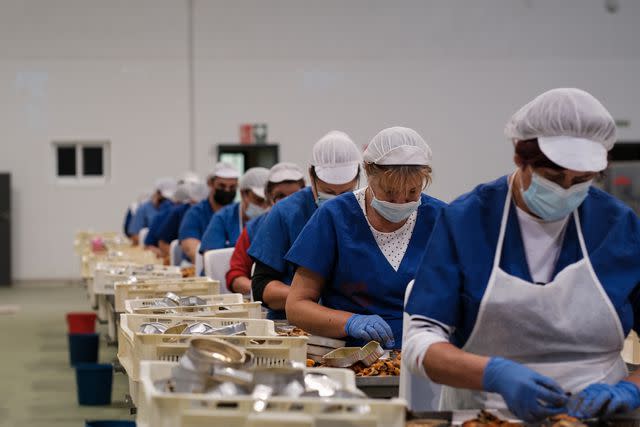
Stacey Leasca
Of course, as Sherman pointed out, it’s definitely a two-way street, with his company purchasing what he called a “significant volume” of product from local producers in both Spain and Portugal. But that’s all a part of growing this tighter, closed-loop, traceable, and, in some ways, more sustainable system.
“We have to be careful about claims we make around sustainability, but by the same token, it's hard to imagine a better and more responsible seafood product than taking a farmed shellfish and putting it into a can at a cannery right down the street,” Sherman said, adding that it’s also in endlessly recyclable tin, and that there are more ways to think about sustainability — including sustaining communities of fishermen, which are often exploited in the process.
“It hits every single box, and it's a low carbon footprint,” he said. “The farmed shellfish are cleaning up the environment where they're coming from, the harvesters are making money, the people working in the plant are working in a good regulatory framework and making a solid wage. It’s really hard to find something wrong with that.”

Stacey Leasca
Bivalves are, by several measures, a more sustainable option for seafood-loving consumers to try. Seafood Watch lists mussels, clams, oysters, and cockles in its “best choice” category in its national guides. Is anything perfect? Absolutely not. But perhaps it could be a better alternative for the three billion people around the world who depend on seafood as a significant source of animal protein.
Of course, it doesn’t hurt Sherman or his team’s bottom line that the global canned seafood market is estimated to reach $50.47 billion by 2030. Still, Sherman said, “We’re simply insisting on getting the absolute best stuff that these canneries are producing.” And one day soon, his cannery will join them.

